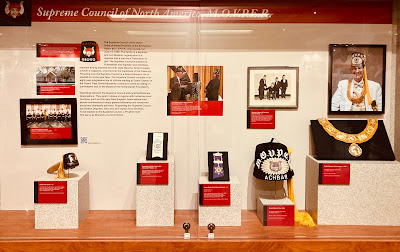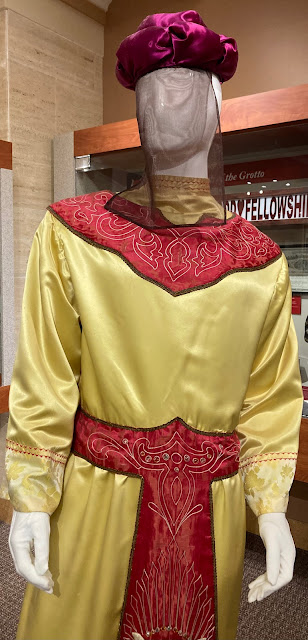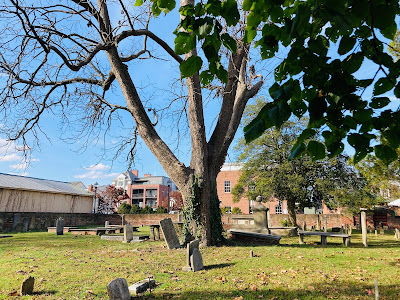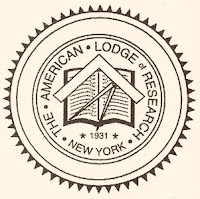 |
| Michael LaRocco |
Monday, November 14, 2022
‘LaRocco is library’s new leader’
I’m sure many of you know Bro. Michael from his appearances as a presenter in our Library Lecture Series and in his very active presence in the Metropolitan Region. Michael is a Past Master of Lynbrook-Massapequa Lodge 822, as well as the current Assistant Grand Lecturer for the Nassau District. He is a member of the Holy Royal Arch, the Cryptic Council, the Knight Templars, and the Ancient Accepted Scottish Rite, NMJ. He is a Past Most Wise Master of Long Island Chapter of Rose Croix, a founding member the Magus Guild of the Valley of Rockville Centre, and the Ritual Director for the Valley of Rockville Centre. He received the Meritorious Service Award from the Council of Deliberation and was elected to be coroneted a 33° Mason, to take place in August 2023.
The Chancellor Robert R. Livingston Library and Museum wants to “Bring the Library to the Brothers.” As Michael has extensive professional communications expertise and is an excellent presenter, he is well suited for leading this role in your Lodges and Districts.
He joins the Library staff of Bro. Alex Vastola, our Director of Collection Services, and Ms. Ratirat Osiri, our Curator. Please join me in welcoming him.
Congratulations Bro. Michael! Enjoy!
(It’s a dream job for me, but what do I know about running a library?)
Sunday, November 13, 2022
‘MOVPER @ the GWMNM’
We who attended the Scottish Freemasonry in America Symposium last weekend at the George Washington Masonic National Memorial in Virginia were given a tour of the museum and other spaces in the building. This edition of The Magpie Mason is a sidebar to the main coverage of that event because I can’t resist sharing some photos of the Grotto exhibit.
What’s the Grotto? Surely you jest! Formally known as the Mystic Order of Veiled Prophets of the Enchanted Realm, it is—as the name infers—the goofy side of Freemasonry in the United States. And elsewhere, actually. They’re establishing Grottoes in Mexico and other points south.
Anyway, here are my shots of the tidily curated MOVPER exhibit.
Saturday, November 12, 2022
‘Scottish Freemasonry Symposium, Part I’
New Jersey Lodge of Masonic Research and Education 1786 was very well represented last month at the Scottish Freemasonry in America Symposium hosted at the George Washington Masonic National Memorial in Alexandria, Virginia. Two of our Past Masters, Bob and me; our incoming Secretary, Erich; one former Tyler (Jersey spelling), Michael; and other New Jersey Masons (Paul, David, Ray) enjoyed the three-day celebration of the historical and cultural significances Scotland and its Freemasons have impressed on the United States.
Two lodge rooms are housed inside. The one typically in use is downstairs in an addition to the building dating to the 1950s; the other, used only once annually to keep it legally in Masonic use, is upstairs. Ascending the staircase is like traveling back in time. The Old Lodge Room at the top of the stairs is intimate, creaky, and antique in a way that would make even the most frivolous “knife and fork Mason” pause in appreciation for its atmosphere. In the northwest corner is a wall safe outfitted with a glass facade to allow viewing of artifacts, but they have been removed for preservation. (Nothing precious, really. Just that Gilbert Stuart portrait of Washington reproduced on the dollar bill.) On November 20, 1824, Lafayette visited and was made an honorary member inside this room. The floors are said to be imbued with the blood of Union soldiers from when the building was commandeered for use as a military hospital during the Civil War.
One very notable connection to New Jersey is the lodge’s reverence for Bro. Hugh Mercer, a native of Scotland who served under Washington as a general in the Revolutionary War. He died from wounds suffered during the Battle of Princeton, and the County of Mercer and Mercer Lodge 5 are among his namesakes. He was a Mason of The Lodge at Fredericksburg, and not far from the lodge stands the General Hugh Mercer Monument, a larger-than-life bronze atop a massive stone plinth, erected by the federal government in 1906, memorializing him. We sojourning Masons walked in a procession to this statue where W. Bro. Shelby Chandler, now the lodge Tiler (Virginia spelling), presented a detailed biography of the hero to whom our nation owes so much.
En route to the statue, we stopped at the oldest Masonic cemetery in the Western Hemisphere. Established by the lodge in 1784, it is the final resting place of approximately 270 Masons and their families. It is very much part of Fredericksburg Lodge’s life, and although many of the headstones show their age through worn, illegible inscriptions and broken pieces, the cemetery is not a neglected graveyard, and the grounds are maintained by the brethren themselves.
Back at the lodge, our large party was seated for a sumptuous feast to restore our strength before a special communication of the lodge.
Things started Friday, November 4, the 270th anniversary of the initiation into Freemasonry of George Washington in The Lodge at Fredericksburg. The lodge then met inside John Jones’ tavern, located around the corner from the current Fredericksburg Lodge 4. The brethren are at home in a charming brick structure dating to 1816. As one would expect, the lodge building could serve as a destination Masonic museum, its walls and square footage displaying all kinds of story-telling treasures, from framed aprons and portraits to furniture and many mementos.
 |
Presented to Fredericksburg 4 by George Washington 285 in NYC on November 4, 1920. |
One very notable connection to New Jersey is the lodge’s reverence for Bro. Hugh Mercer, a native of Scotland who served under Washington as a general in the Revolutionary War. He died from wounds suffered during the Battle of Princeton, and the County of Mercer and Mercer Lodge 5 are among his namesakes. He was a Mason of The Lodge at Fredericksburg, and not far from the lodge stands the General Hugh Mercer Monument, a larger-than-life bronze atop a massive stone plinth, erected by the federal government in 1906, memorializing him. We sojourning Masons walked in a procession to this statue where W. Bro. Shelby Chandler, now the lodge Tiler (Virginia spelling), presented a detailed biography of the hero to whom our nation owes so much.
 |
| ‘You Masons are all goin’ to hell!’ hollered one woman driving past us, prompting much laughter. |
En route to the statue, we stopped at the oldest Masonic cemetery in the Western Hemisphere. Established by the lodge in 1784, it is the final resting place of approximately 270 Masons and their families. It is very much part of Fredericksburg Lodge’s life, and although many of the headstones show their age through worn, illegible inscriptions and broken pieces, the cemetery is not a neglected graveyard, and the grounds are maintained by the brethren themselves.
 |
| Presidents Washington and Monroe in miniature portraits. |
Back at the lodge, our large party was seated for a sumptuous feast to restore our strength before a special communication of the lodge.
 |
| A word about lapel pins: We guests were presented with two by our hosts at Fredericksburg Lodge. Big ones. On the left is the lodge’s 270th anniversary (1752-2022) pin. The design is half the Scottish flag on the left with half the Fredericksburg flag on the right. The pin at right is—well, I guess I know what I’ll be wearing on Washington’s birthday! It unquestionably is the largest lapel pin I’ve ever owned; in length and width it exceeds a U.S. dollar coin. Not the lame Sacagawea coin, but, like a Morgan silver dollar! It’s hard to get a good photo of them. |
It was the Official Visit of Most Worshipful James Winfield Golladay, Jr., Grand Master of the Grand Lodge of Virginia. As such, it was a long meeting thanks to numerous introductions and greetings of many individuals and groups of eminent Masons. When the Left-Handed Past Grand Pursuivants were asked to present themselves west of the altar, I attempted to sneak out the Outer Door. Alas, the lodge was closely tiled (New York spelling).
 |
| Printed in 1668 in Cambridge, this KJV is the Bible in use when Washington took his obligations. |
In case you were wondering, yes, the King James Bible on which Washington placed his hands for his Masonic obligations was present. Printed in 1668 in Cambridge, England, it is safeguarded by the lodge and is displayed, open to Ecclesiastes 12, inside a translucent case. No flash photography is permitted; fortunately our smart phones feature cameras that can capture images almost regardless of lighting conditions.
All of that would have sufficed for a full Masonic weekend, but the conference that drew us to Virginia began the following morning. More on that to come in an upcoming edition of The Magpie Mason.
Friday, November 11, 2022
‘Next February in Alexandria’
 |
| Courtesy GWMNM |
 |
| Courtesy GWMNM |
Click here to see the itinerary.
There will be meetings and tours Friday through Sunday, and your lodge (if you plan ahead) may hold a tiled meeting in one of the Memorial’s lodge rooms! On Monday the 20th, there will be a parade and the cornerstone re-dedication.
Mention of this parade during the events of last week caught my attention. Generally, I am not a parade marcher, but that’s in terms of, say, a Masonic contingent in a St. Patrick’s Day parade or other civic display. This will be Freemasons only on the march like it’s 1740s Dublin or something! For some reason that’s different to my mind, so I believe I will don my new apron (blue borders with rounded flap and edges) and a Past Master jewel (TKS!).
We had a procession from Fredericksburg Lodge to a historical site in town last Friday when some clod in a passing car shouted we Masons are going to hell. The sight of this procession will give them something to howl about!
From the publicity:
All grand lodges, lodges, Masonic groups, and Freemasons in amity with the Grand Lodge of Virginia may participate in the Parade from historic Old Town Alexandria up to the Memorial’s beautiful grounds. The Parade will step off at 1 p.m. The Re-dedication Ceremony will take place at 3 p.m. All individuals attending the events of February 20 should register here. Those who register and attend will receive a special poster celebrating the event.
The Memorial’s traditional Washington’s Birthday Gala will be held on Wednesday, February 22. This elegant formal event, as always, will include a reception in Memorial Hall, entertainment in the Theater, and a Gala Banquet in Grand Masonic Hall.
Click here to read more about the events planned. And seriously, get your lodge or chapter or whatever to book a lodge room for a meeting. And petition the Grand Architect for favorable weather!
Monday, November 7, 2022
‘UGLE debuts Craftcast’
Magpie coverage of the weekend’s “Scottish Freemasons in America” conference in Virginia is coming soon, but in the meantime, here’s news from the English.
The United Grand Lodge of England announced the debut today of Craftcast: The Freemasons Podcast. Hosts Shaun Butler, James Dalton, and Stephen Whatley discuss “all things Freemasonry” and will welcome guests from throughout the UGLE.
Click here.
UPDATE:
Tuesday, November 1, 2022
‘Help preserve Masonic history’
 |
| CFCR |
There exists an opportunity for you to preserve artifacts, regalia, ephemera, and other pieces of fraternal history. Indiana University’s Center for Fraternal Collections and Research put out a call last week for your donations of such items.
The idea is for you to contact CFCR here, and discuss the pieces that might be maddening clutter to you, but could prove to be essential for scholarly understanding of America’s vast history of fraternalism.
Sunday, October 30, 2022
‘100 years of Publicity 1000’
It was a hundred years ago today, at this very hour in fact, that my lodge was made legal by the Grand Lodge of New York.
On the evening of Monday, October 30, 1922, inside the Grand Lodge Room of Masonic Hall, Publicity Lodge 1000 was constituted and its officers installed by a ritual team consisting of Grand Master Arthur S. Tompkins, Deputy Grand Master William A. Rowan, Senior Grand Warden Meyer B. Cushner, Junior Grand Warden Terry M. Townsend, Grand Treasurer Jacob C. Klick, Grand Secretary Robert H. Robinson, Grand Chaplain Oscar F. Trader, and Grand Marshal John J. MacCrum.
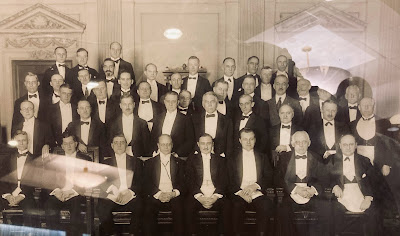 |
| The first meeting Under Dispensation, Thursday, December 29, 1921. |
The lodge was organized by advertising and other media professionals. According to legend, a number of them were acquainted professionally and socially (maybe through the Advertising Club of New York), but it was some time before they realized many in the group were Freemasons. Upon that discovery, they set about organizing a lodge. Grand Master Robert H. Robinson issued the Dispensation, and the first meeting U.D. was held Thursday, December 29, 1921.
It is unsurprising Publicity’s birth was covered by trade publications serving the publishing world. The November 4, 1922 edition of The Fourth Estate newspaper reported:
An interesting event in advertising circles was the constitution of Publicity Lodge No. 1000 F&AM on October 30.
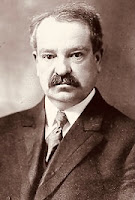 |
| Arthur S. Tompkins |
There was a large attendance of Masons from other lodges. The ceremony was simple but impressive. St. Cecile quartet furnished the music. Addresses were made by the Past Grand Master Robert H. Robinson, and on George Washington as a Mason by Grand Master Tompkins. The Master and a delegation from St. Nicholas Lodge presented the new lodge with a handsome ballot box. Several charter members of Publicity came from St. Nicholas.
 |
| Our original VSL. |
Herman G. Halsted, of Paul Block, Inc., is Master.
John H. Baumann, of Stevens & Baumann, is Senior Warden.
Louis W. Bleser, of Charles C. Green Advertising, is Treasurer.
George French is Secretary.
The November 11, 1922 issue of Editor & Publisher reported:
The ceremony of constitution was attended by many Masons from other New York lodges, and visitors from abroad, including the Past Grand Master of Masons of Nova Scotia. The Master of Saint Nicholas Lodge No. 321, accompanied by a delegation of members, was present and presented Publicity with a handsome ballot box.
E&P also included Publicity among its Ad Clubs and Associations listings.
 |
| Herman G. Halsted |
How did Publicity grab the Number 1000, the huge milestone and a most memorable cardinal number? It’s not exactly a sequential lodge number. Bay Side Lodge 999 was constituted on May 9, 1922; St. Mark’s Lodge 1001 somehow was constituted the day before that; and Lodge 1000 received its warrant nearly six months later! For a fraternity that inculcates study of Arithmetic among the Liberal Arts and Sciences, this appears amiss.
Publicity Lodge lore explains that because the Roman numeral M equals our number 1000, it was planned for us to receive that number. What’s so great about M? In advertising copy writing, the copy writer adds an M at the end of his copy, center page, to inform the editor there is nothing more to read. (How the advertising business chose M for that purpose may be unknown today.)
And speaking of writing and editing, MW Tompkins also advanced the idea of an official periodical for New York Masons. It would be titled The New York Masonic Outlook. This was a novel idea as grand lodges did not have in-house magazines for their members, but in the 1920s, all things became possible. Masonic membership in the United States surged during and after World War I and through the twenties, reaching 3.5 million before the disaster of the Great Depression. The multitudes of Master Masons resulted in lodges proliferating coast to coast. More real estate was acquired and developed. More charities were established. The appendant bodies flourished. Supporting industries providing regalia, paraphernalia, and other goods profited. There was more of everything, so there was money to establish a magazine for New York Freemasonry too.
It didn’t take Grand Lodge long to hire the best available editor to bring the Outlook to fruition. Harry LeRoy “H.L.” Haywood (1886-1956) was among the top Masonic authors whose books are valued for their clear prose to help the reader grasp Masonry’s sometimes arcane and vexing subjects. He also was renowned for editing The Builder, published by the National Masonic Research Society, that was not only a magazine, but was the centerpiece of a correspondence course in Masonic education. Haywood arrived in New York and, seeking the most talented available help in starting a magazine from scratch, he affiliated with—who else?—Publicity Lodge 1000.
Because the world outside has changed in infinite ways since 1922—people then could not comprehend what we today take for granted—it is especially appreciated how Publicity Lodge remains mostly unchanged. Our styles of dress and appearance evolved, and even our ritual has been altered a little, but our sacred retreat of friendship and virtue steadfastly upholds the meaning of Masonry. Here’s to another hundred years!
M
Thursday, October 27, 2022
‘Ukraine grand master to be feted’
 |
| Click to enlarge. |
Columbia Lodge 1190 will honor Steven Rubin, Ted Harrison, and the Grand Master of the Grand Lodge of Ukraine at its fall festive board/brunch next month.
Our Deputy Grand Master needs no introduction. Ted, of course, is the ubiquitous presence in New York Freemasonry who, among many other things, quarterbacked Grand Lodge’s Fraternity on Campus Committee, thereby seeing Columbia 1190 set to labor. Anatoliy Dymchuk will visit via Zoom. And brunch? Well, that’s the most important meal between breakfast and lunch.
Now, I know what you’re thinking: “Tuxedo at…at noon?!” If you don’t have a morning suit, just do it.
Wednesday, October 26, 2022
‘Before the history disappears’
Another great night with The American Lodge of Research is in the books, with a stellar group in attendance too.
New York City’s lodge of Masonic research and education convened for its trimesterly—if that’s a word—stated communication, welcoming to the lectern MW Bill Sardone, who discussed the past fifty-five or so years of the Order of DeMolay in the state. He has written it for publication in our upcoming (early 2023!) book of transactions, making it a kind of sequel to a paper included in, if I’m not mistaken, the lodge’s twenty-fifth anniversary volume of papers from 1956.
Sardone’s autobiographical story in New York DeMolay essentially is the general history of the Order here since the late sixties. And he has the personal collection of regalia (including fezzes!), memorabilia, and artifacts to prove it, some of which he brought for display. Not only was Sardone the first State Master Councilor, but in that capacity he also became the first guest speaker at a Grand Lodge Communication who was not a Mason.
That kind of thing is taken for granted today, but in 1968 it was a singular occurrence. The Grand Master gave the State Master Councilor five minutes: one for his entrance, three for speaking, and one for his exit. To accommodate him, the Grand Lodge had to be closed. The brethren (so numerous that Grand Lodge met in the old Statler Hilton across from Madison Square Garden) were not amused, but the young Sardone was prepared, his written remarks honed to the 180-second specification, and, as they say in comedy, he killed. Attempting to exit within the five-minute constraint, he was intercepted by the Junior Grand Deacon on the order of the Grand Master, returned to the East, and received a thunderous ovation.
The late 1960s. Obviously not DeMolay’s zenith, and a time of ceaseless political violence and cultural revolution for this country. I’m guessing it was a challenge, to put it mildly, for young people then to adhere to traditions. We look at the way pop culture “history” presents those days today, with unanimous veneration of counter-culture Baby Boomers, whereby those who couldn’t know better are caused to believe that Sardone and his peers never could have existed. Of course they were part of American life too. One slide on the screen showed the McCandlish Phillips story in the March 19, 1970 New York Times with the headline “Boys Dedicated to Good Deeds.” Sardone also displayed photos of VIPs visiting DeMolay events, including Gov. Nelson Rockefeller, Defense Secretary Melvin Laird, and broadcast journalists Walter Cronkite and Chet Huntley. Pat Paulson figures somewhere in there as well.
Bill Sardone said he wrote his reflections on DeMolay to get them on paper so that this history doesn’t disappear. Write on, Grand Master!
Sunday, October 23, 2022
‘Journal 58: Masonic beginnings and ends’
Issue 58 (Fall 2022) of The Journal of the Masonic Society has been out several weeks; I just finished reading it, and am delighted to report it is another enlightening and entertaining collection of articles.
Anyone chagrined over Freemasonry’s future ought to behold Antonio Mantica’s “The View from the Starting Line,” in which he inspires with his personal story of seeking the mysteries of the Order. The 28-year-old Fellow Craft of Lexington Lodge 1 in Kentucky likens his Masonic journey to a marathon, which makes sense, and he invokes the story of Eliud Kipchoge, the Kenyan runner who incredibly redefined the marathon, making it an enterprise of less than two hours. It’s not that Mantica wants speed in his travels; instead he appreciates Kipchoge’s ambition to uplift his performance “to another level.” And the runner didn’t train alone. He employed no fewer than forty-one fellow long distance racers to compel him forward—not just to move faster, but to “pass on a message that no human is limited.”
With a similar mindset, our young brother hurdled various personal and cultural potential obstacles in his Masonic path, and he joined the very excellent Lexington Lodge, happy to discover he had been accepted by “a group of respectful men…who listened, comprehended, and met me on the level.”
While at this stage of Masonic development, any Fellow Craft is justified in being a receptor of good and wholesome instruction, but this brother both desires Light and intends to reflect it. “I also see the opportunity to offer my own experiences as a helping hand to my brothers in Freemasonry,” he writes. “As a ten-year student of physics, I cannot help but make the analogy of laser light, where light bounces back and forth off mirrors inside of a ruby cube, giving energy to nearby atoms until they have enough energy to light themselves, causing a coherent beam of red light to radiate from the apparatus.” Fiat lux rubrum, my brother.
Pennsylvania’s Seth Anthony is back, this time delivering a brief story about the New York City locus of both the Cerneau Rite and the Ancient and Primitive Rite of Memphis and Misraim. Mott Hall is no longer standing, but in its time the building became the place where Masons of these orders met. The Mott family was prestigious in the medical profession during the nineteenth century, and Dr. Alexander Mott was Puissant Lieutenant Grand Commander of the Cerneau Rite from the 1870s until his death in 1889. It makes me smile to see a Pennsylvania Mason write of the Cerneau Scottish Rite. (Visit a lodge in the Keystone State, and you learn why.)
Another Kentucky Mason, W. Bro. Brandon Garrett of Elkhart Lodge 568, also exhibits a scientific mindset and an interest in the Fellow Craft Degree in his “Reality: A Subjective User Experience in the Gateway Interface.”
“We don’t observe our reality. We recreate it,” he says. “Granted, we don’t continuously recreate the entire world every moment, just our panoramic perspective.” Linking this to one aspect of the Five Steps toward the Middle Chamber, Garrett reminds us our senses have their limits. “Reality is much the same [as] a user interface of what we need to deal with while working on a physical plane,” he writes. “The mechanical movements of consciousness, the soul, or even the unseen forces of nature, such as gravity, could be viewed and observed if allowed a glimpse into the running background behind our reality.”
Speaking of reality, Masonic Society Fellow Michael Moran, another Pennsylvanian, in his “Practical Use of Reflection,” explains how his habit of periodically taking off time from work as a university professor informs his growth as a Mason. “Reflection can be enormously helpful to identify what really happened…as opposed to relying on what can be faulty memory,” he says. The difference between reflection and recollection lies in “reviewing accumulated notes and records.” That journalistic practice of taking notes and referring to them later forces one to be honest and avoid the pratfall of remembering the good and suppressing the bad of the past. The goal is to plan for the future, and have vision for it. Moran (also The Journal’s book reviews editor) resolves to continue educating himself in Masonry and also keep encouraging others in their learning. The fraternity is lucky to have him.
Andrew Nechetsky, another Pennsylvanian, of Pen Argyl Lodge 594, reflects on Abraham Lincoln, tying Lincoln’s thoughts on God and man to the Craft’s. Bro. Nechetsky sums up Lincoln’s purported approbation of Freemasonry and his alleged petitioning for the degrees before calling for some symbolic and obviously posthumous making a Mason of the sixteenth president.
Yes, well, continuing with mortality, Bro. Jack Freund of Reynoldsburg Lodge 340 in Ohio, and a 32° Mason, brings his doctoral knowledge of Information Systems to bear in an impressive article that analyzes how death and immortality are regarded in the degrees of the Ancient Accepted Scottish Rite (Northern Masonic Jurisdiction) in his “From Darkness to Light to Darkness Again” near the back of this issue of The Journal.
He ably presents a technically dense subject in plain language, but that doesn’t mean I can summarize it rightly here. But, he zeroes in on twenty-one words conveying ideas of death and immortality to see how the AASR-NMJ rituals reveal those ideas. He’s been a Scottish Rite Mason for more than a decade, and he presents his findings through a half-dozen bar graphs of analyses. He concludes “Through the daily application of the Scottish Rite core values, we can find a path to kindle and fan the flames of that divine spark inside us all.”
My opinion of the NMJ (I call it the Non-Masonic Jurisdiction) differs, but I admire his positivity.
And that’s not all!
The Journal includes a variety of regular features. The President’s Message from New York’s RW Bro. Oscar Alleyne beckons us to muster our fortitude even in our interpersonal relationships “to perhaps face trials and personal persecutions in defense of a just and worthy cause.” From the Editor’s Corner, Michael Poll pulls back the curtain on the inner workings of The Journal, as he celebrates his twenty-fifth issue as Editor in Chief. A newly added item, titled “Masonic Minutiae,” by Second Vice President Mark Robbins, puts questions to you for your research and edification. The Book Reviewers tell us about four recent titles you may want to read. First Vice President Greg Knott’s “Through the Camera’s Lens” takes us to Oklahoma City National Memorial which honors the many deaths of the terrorist bombing of 1995.
No, of course I didn’t forget “Vetus Viginti Septem” by W. Bro. M. Christopher Lee, Master of Butler Lodge 254 in Missouri. The Latin translates to “Old Twenty-Seven,” and this work of creative writing borrows from Scottish Rite. It’s fiction, so I can’t give it away.
Click here to join the Masonic Society and begin receiving The Journal every three months. It’s the best Masonic magazine out there. As you have seen here, it doesn’t only commemorate the fraternity’s history, but it also gives voice to those who think ahead.
I forgot the cover! The front cover photo is by W. Bro. Wayne Dyer, who cast his eyes and camera to the East and shot this photo of the beautiful lodge room in Penarth Masonic Hall in Cardiff, Wales. With a meeting space like this, I don’t know why the Prince of Wales wouldn’t petition one of the lodges, like Windsor 1754.
Subscribe to:
Comments (Atom)




























































